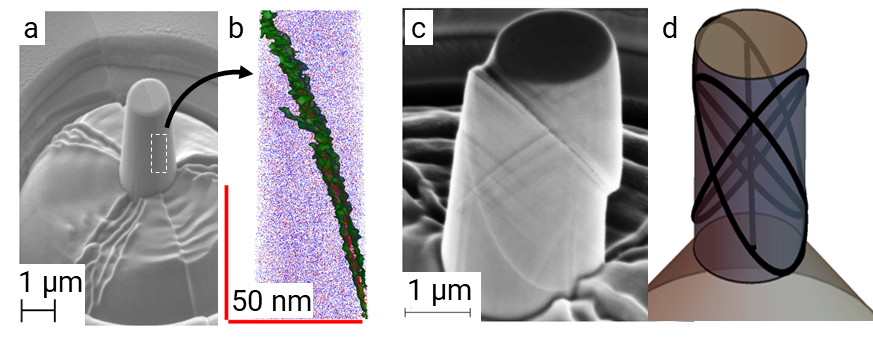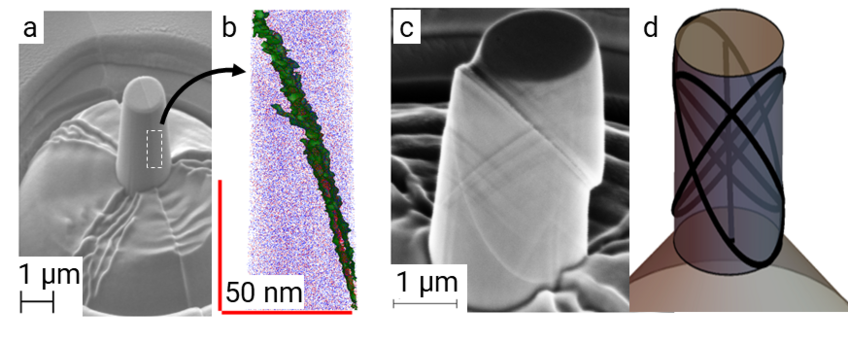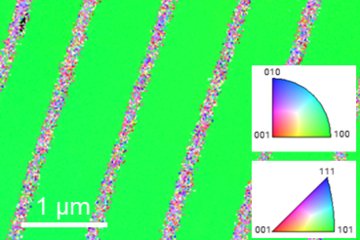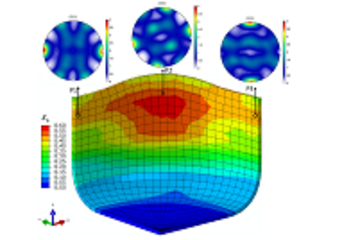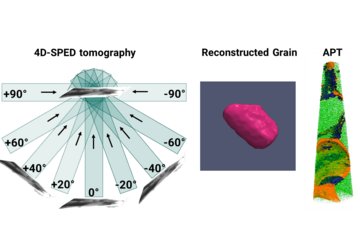
Influence of grain boundary segregation on microscale strengthening of Cu bicrystals
This project studies the influence of grain boundary chemistry on mechanical behaviour using state-of-the-art micromechanical testing systems. For this purpose, we use Cu-Ag as a model system and compare the mechanical response/deformation behaviour of pure Cu bicrystals to that of Ag segregated Cu bicrystals.
In the past decade, solute segregation to grain boundaries (GBs) has been extensively studied and applied to nanocrystalline materials. Segregation to grain boundaries can alter the local chemistry and the boundary complexion which might, in turn, have a pronounced effect on various physical characteristics such as electrical conductivity or mechanical strength. The main goal of “segregation engineering” is to improve upon various properties while also avoiding some of the adverse effects such as decohesion or embrittlement.
Here, we study the aspect of segregation (grain boundary chemistry) and its effect on mechanical behaviour. The study is based on Ag as a segregate solute species in Cu bicrystals, as Ag is almost immiscible in the Cu matrix and hence preferentially segregates to GBs. Therefore, this system allows us to isolate the GB chemistry and its effect on the mechanical response and therefore derive meaningful fundamental conclusions. To achieve this, we utilise in situ micropillar compression coupled with nanoindentation and scratch testing. The conclusions drawn from this study will be helpful in understanding and guiding GB-engineered alloy design.
